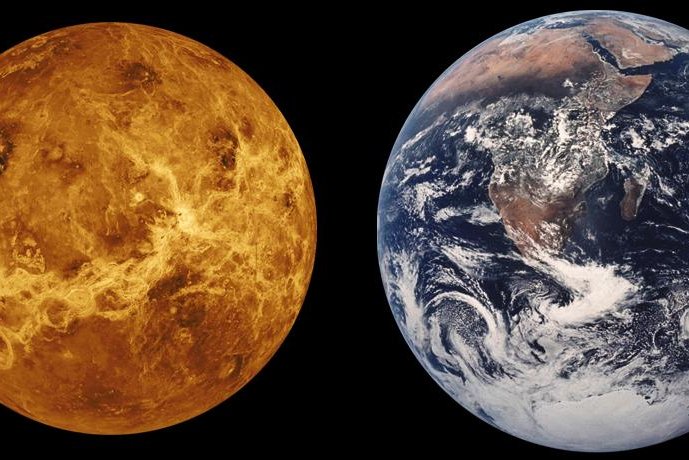A new study suggests Venus once hosted oceans, too. Photo by JPL/NASA.
ITHACA, N.Y., Dec. 30 (UPI) -- Today, the surface of Venus is notoriously hellish -- hot, dry and suffocated by a thick lower atmosphere of toxic gases. But Venus was once covered in oceans. The planet has likely always been too hot to host water, but new research suggests it once featured strange oceans of liquid carbon dioxide.
Aside from the intolerable, ultra-dense atmosphere -- complete with clouds of corrosive sulfuric acid -- and high temperatures, Venus is often called Earth's twin. The two planets are very similar in terms of size, mass, distance from the sun and chemical composition.
The planets are so similar, in fact, that some researchers are suggesting NASA send manned missions to Venus's upper atmosphere before sending envoys to Mars.
Now, according to researchers at Cornell, the twins have another commonality -- oceans.
That Venus's former oceans were made of CO2 isn't exactly surprising.
"Presently, the atmosphere of Venus is mostly carbon dioxide, 96.5 percent by volume," lead study author Dima Bolmatov, a theoretical physicist at Cornell University, recently told Space.com.
More surprising is the idea that CO2 might have been liquid enough to form oceans. Previously, scientists believed the behavior of supercritical fluids changed only gradually as atmospheric conditions are altered.
The term "supercritical" describes fluids or matter that are -- as result of high temperature and pressure -- without distinct liquid and gas phases.
New analysis via complex molecular computer model simulations, executed by Bolmatov and his colleagues, showed changes in pressure and temperature could shift the behavior of CO2 dramatically from gas-like to liquid-like properties.
"This in turn makes it plausible that geological features on Venus like rift valleys, riverlike beds, and plains are the fingerprints of near-surface activity of liquid-like supercritical carbon dioxide," Bolmatov explained.
The new findings were published earlier this summer in the Journal of Physical Chemistry Letters.















